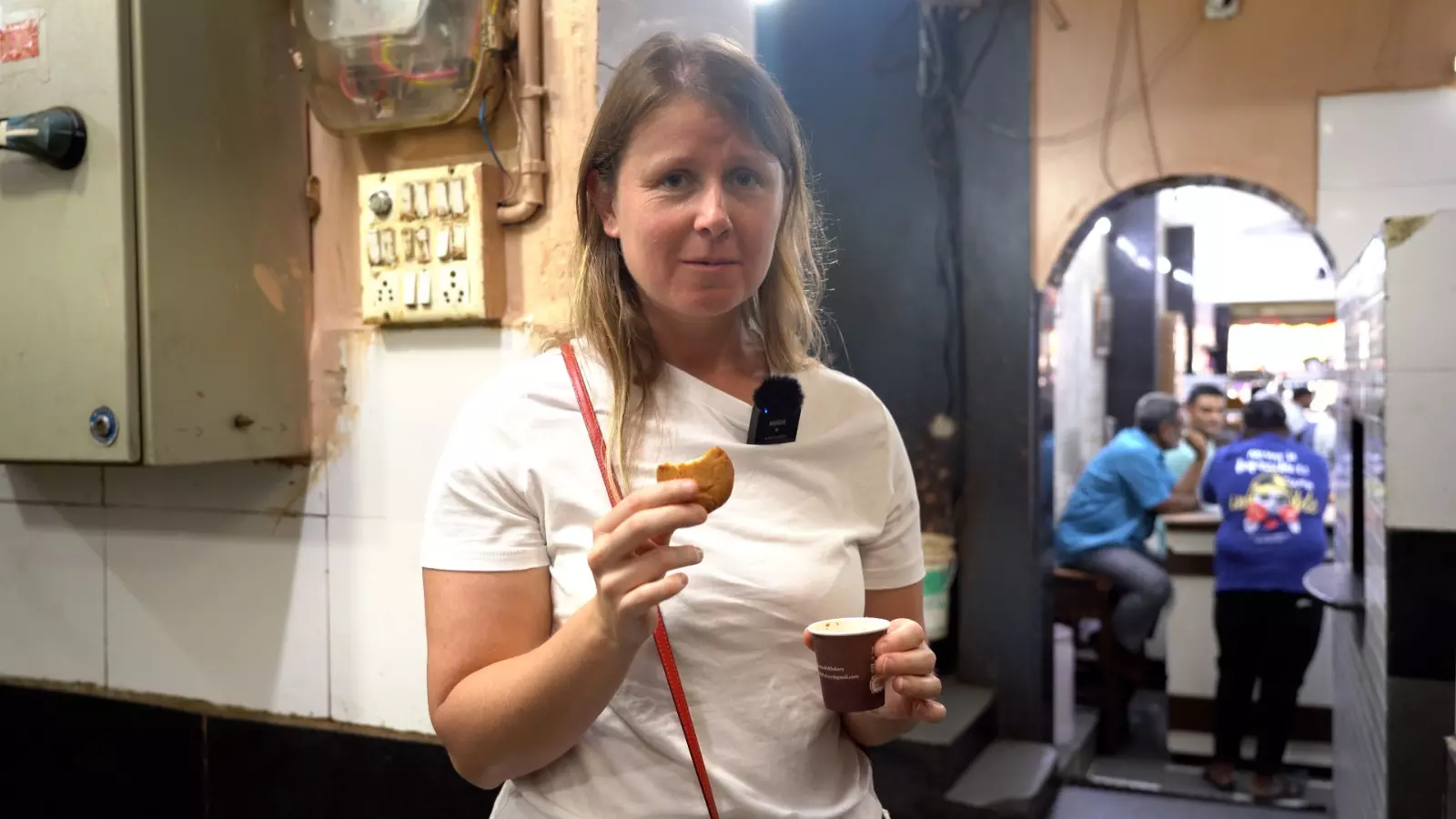
- Home
- India
- World
- Premium
- THE FEDERAL SPECIAL
- Analysis
- States
- Perspective
- Videos
- Sports
- Education
- Entertainment
- Elections
- Features
- Health
- Business
- Series
- In memoriam: Sheikh Mujibur Rahman
- Bishnoi's Men
- NEET TANGLE
- Economy Series
- Earth Day
- Kashmir’s Frozen Turbulence
- India@75
- The legend of Ramjanmabhoomi
- Liberalisation@30
- How to tame a dragon
- Celebrating biodiversity
- Farm Matters
- 50 days of solitude
- Bringing Migrants Home
- Budget 2020
- Jharkhand Votes
- The Federal Investigates
- The Federal Impact
- Vanishing Sand
- Gandhi @ 150
- Andhra Today
- Field report
- Operation Gulmarg
- Pandemic @1 Mn in India
- The Federal Year-End
- The Zero Year
- Science
- Brand studio
- Newsletter
- Elections 2024
- Events
Osmania biscuit: How Hyderabad’s popular tea-time snack got the Nizam’s name
Best enjoyed with a steaming cup of Irani chai, this crisp, baked to a perfect golden, melt-in-the-mouth biscuit, which strikes just the right balance between sweet and savoury, traces its origin to Nizam Mir Osman Ali Khan. Today the royal find is a mass favourite

For many outsiders, the three defining things about Hyderabad are the iconic Charminar, pearls and pearl jewellery and piping hot biryani. For residents of the Telangana capital, however, there is a fourth city classic — a regional legend without which a local’s day, especially their tea-time would remain incomplete.Crisp, baked to a perfect golden and just the right balance between sweet...
For many outsiders, the three defining things about Hyderabad are the iconic Charminar, pearls and pearl jewellery and piping hot biryani. For residents of the Telangana capital, however, there is a fourth city classic — a regional legend without which a local’s day, especially their tea-time would remain incomplete.
Crisp, baked to a perfect golden and just the right balance between sweet and savoury, this melt-in-the-mouth biscuit claims its origin to the bounty of the last Nizam of Hyderabad, Mir Osman Ali Khan; thus the name Osmania biscuit. The royal find is today a mass favourite, enjoyed alike by daily wage earners and blue-collared professionals. And best had, according to Osmania biscuit experts, paired with another local institution — a steaming cup of Irani chai. Together, the two typically cost a modest Rs 25; Rs 5 for an Osmania biscuit and Rs 15-20 for a cup of Irani Chai.
No wonder the line, “If you haven’t had Osmania biscuit with Irani chai, it’s not really evening”, is a common refrain in Hyderabad.
But while its demand among the locals may yet be unparalleled by its popularity outside the city, the biscuit has already stepped out of Hyderabad’s limits, being marketed on e-commerce platforms like Amazon and FlipKart. Hyderabad-founded baked goods brand Karachi Bakery has also taken the Osmania biscuit beyond the city with its global distribution chain.
Also read: Punjab floods: How Ravi’s fury, embankment collapse brought calamity to farmers
Bite into it once and you are hooked. As Samantha Lewis, a visitor from the UK who was out to see the Charminar when The Federal caught up with her earlier this week, found. “I loved how crispy and delicious they were,” she said after trying the biscuits.
The story goes that sometime in the 1940s, patients admitted to the Osmania General Hospital (set up by the Nizam in 1910) were given milk and bread as a nutritious diet to help in their recovery. But patients grew weary of the same diet daily and once when Mir Osman Ali was visiting the hospital, one of the patients requested him for a change of diet.

Samantha Lewis of UK tries out an Osmania biscuit. Photo by Bura Harish, The Federal Telangana
According to local historians, the Nizam instructed his kitchen staff to prepare a light snack that was both sweet and savoury. Under the supervision of doctors, the royal chefs rustled up a biscuit using flour (maida), butter, milk, salt and sugar. It tasted good and was easy to digest and the Nizam ordered it to be distributed to the hospital patients, along with the routine milk and bread. Thus was created the Osmania biscuit.
“The biscuits were first introduced by Nizam Mir Osman Ali Khan himself, and that’s why they became known as Osmania biscuits,” concurred Dr Syed Ayoob Ali, retired professor of Telangana’s Kakatiya University.
From being produced in the royal kitchen, the biscuits began to be manufactured at a special bakery set up by the Nizam in the city’s Abids area. Patients loved them so much that they started sharing the biscuits with visiting family members and soon word-of-mouth-popularity had other bakeries in the city making the ‘Osmania biscuits’.
Enterprising Irani chai shops started sourcing them from bakeries for customers to enjoy them with their cup of tea, not only making the biscuits even more accessible, but giving birth to the pairing which has become a Hyderabad institution.
Also read: How Raghunath Sasmal made Dahibara Aludum a part of Odisha’s culinary legacy
According to local estimates, lakhs of Osmania biscuits are consumed every day in the city. “Hundreds of bakeries are making biscuits under the name Osmania. Wherever people gather — whether at an Irani café or a tea stall — you’ll always find Osmania biscuits being served with chai,” said Shaik Jilani, a software engineer, who had traveled all the way from Hyderabad’s Gachibowli area to Nimrah Bakery, near Charminar, just for chai and biscuits.
Despite the biscuit’s ubiquity, there are three bakeries in Hyderabad which are synonymous with this Osmania treat. Subhan Bakery, in the city’s Nampally area, claims the credit of being the first to introduce the “Royal Biscuit”, now known as Osmania biscuit, to the market. The second, Nimrah Bakery, located right beside the Charminar, is always crowded with buyers, while Niloufer, located near the Niloufer Children’s Hospital in Lakdikapul, is also similarly packed. Many in Hyderabad’s ‘old city’ area also prepare the biscuits at home.

Abood Bin Aslam, owner of Nimrah bakery. Photo by Bura Harish, The Federal, Telangana
According to manufacturers, while in the past the Osmania biscuits would be hand-made, in today’s era of mass demand and production, one change that has been introduced is that they are now made by machines.
For years, Britannia has marketed its biscuits, such as Marie, as “perfect tea-time companions”. A 1981 advertisement for Britannia Marie shows the biscuit being served with tea; as some take a bite of it before sipping on their cuppa, others dip it in the beverage before taking a bite. Earlier this year, the brand used the tea-biscuit pairing to promote another of its products, Good Day.
For Hyderabad residents, though, the bond with Osmania biscuits and Irani chai started much before the advent of such ad campaigns and remains as strong as ever.
“When you place it in your mouth, bite lightly with your teeth, and let it rest on your tongue, it melts instantly. It’s a little salty, a little sweet—that’s the specialty of the Osmania biscuit. It’s crisp and light. Even at lunchtime, instead of a meal, we happily prefer chai and biscuits,” said Ramesh, a resident of Hyderabad’s Nallakunta area, out shopping with his family near Charminar.
Also read: How Makhana cultivation in Bihar leaves farmers struggling for survival
In recent years, the awareness about Osmania biscuits has been growing among those outside Hyderabad. And the humble treat seems poised to claim a greater share of the global culinary spotlight.
“Today, Osmania biscuits are served to travelers at Mumbai and Bengaluru international airport food lounges,” claimed Abood Bin Aslam, owner of Nimrah bakery. He added: “Retailers in the UAE are requesting us to set up production centers there.”
Once a nutritious gift from the Nizam of Hyderabad to hospital patients craving a change of taste from their routine fare, Osmania biscuit has come a long way in satisfying the taste buds of millions of Hyderabadis for generations and is only just beginning its journey across the global culinary map.
